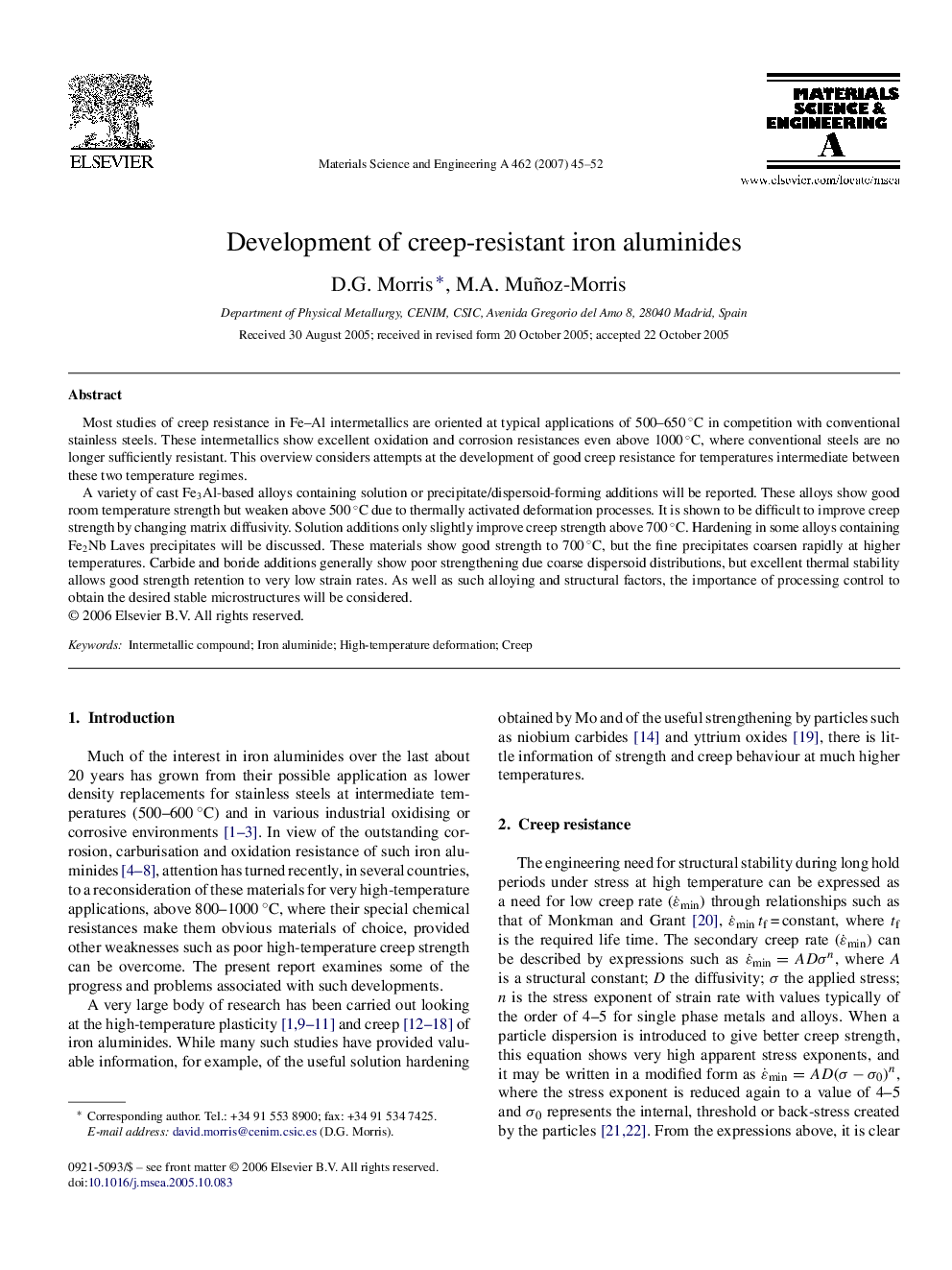| Article ID | Journal | Published Year | Pages | File Type |
|---|---|---|---|---|
| 1583365 | Materials Science and Engineering: A | 2007 | 8 Pages |
Most studies of creep resistance in Fe–Al intermetallics are oriented at typical applications of 500–650 °C in competition with conventional stainless steels. These intermetallics show excellent oxidation and corrosion resistances even above 1000 °C, where conventional steels are no longer sufficiently resistant. This overview considers attempts at the development of good creep resistance for temperatures intermediate between these two temperature regimes.A variety of cast Fe3Al-based alloys containing solution or precipitate/dispersoid-forming additions will be reported. These alloys show good room temperature strength but weaken above 500 °C due to thermally activated deformation processes. It is shown to be difficult to improve creep strength by changing matrix diffusivity. Solution additions only slightly improve creep strength above 700 °C. Hardening in some alloys containing Fe2Nb Laves precipitates will be discussed. These materials show good strength to 700 °C, but the fine precipitates coarsen rapidly at higher temperatures. Carbide and boride additions generally show poor strengthening due coarse dispersoid distributions, but excellent thermal stability allows good strength retention to very low strain rates. As well as such alloying and structural factors, the importance of processing control to obtain the desired stable microstructures will be considered.
